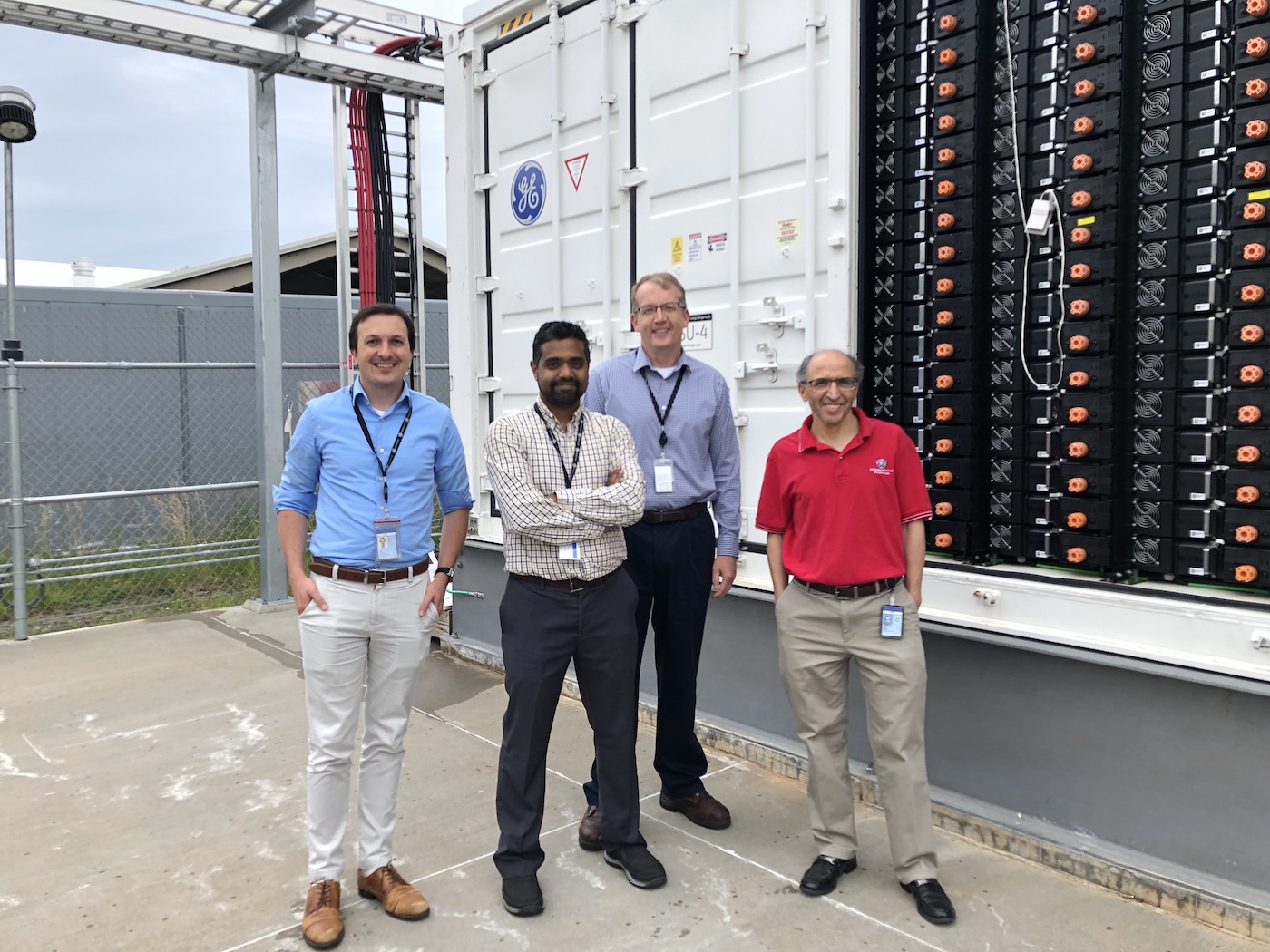The weather playing havoc with summer travel schedules is something we have been getting used to for a while. It has also been affecting the way we live and challenging notions we have taken for granted — like the reliable supply of electricity. Now, suppose businesses and neighborhoods had their own small power plants that would leave them less exposed to the whims of nature and less dependent on the grid.
It’s no surprise that some commercial and industrial businesses as well as power utilities have started down this road, installing photovoltaic solar panels and batteries to generate and store their own electric power, hence building their own local microgrids.
GE Research and GE Renewable Energy are now helping them to get there. They’ve partnered with Sandia National Laboratories and the Department of Energy’s Solar Technology Office on a $1.75 million project to design, build, and test a 400-kilowatt-hour, 2-hour battery energy storage system, also known as BESS. It will be paired and field-tested with a PV solar array at GE’s Niskayuna Research campus, outside Albany, New York. “It’s exciting to see the unprecedented rates at which PV solar and other renewable resources are growing,” says Ahmed Elasser, principal systems engineer at GE Research, who is leading the project. Solutions such as the BESS unit under development at Niskayuna “will play a key role in ensuring grid reliability and resiliency.”
GE Research project leader Ahmed Elasser explains how the BESS would allow businesses to produce and store their own power. Top: The GE Research team of Phil Hart, Naveenan Thiagarajan, Bill O’Rourke, and Elasser stand in front of one of GE’s first Renewable Reservoir Energy storage units, which is part of a larger 12MVA Future of Energy Test Facility on the Lab’s Niskayuna research campus. Image and video credit: GE Research.
GE has been working with power utilities to integrate renewable power into their grids using battery energy storage systems. With the price of PV solar panels and lithium-ion batteries dropping in recent years, commercial and industrial businesses are also increasingly installing BESS systems. These new systems sit behind the meter, or BTM, and are controlled by the site owner. By setting up their own microgrids, these businesses can avoid hefty charges, known as demand charges, that utilities impose on big electricity users on top of their regular bill, according to Elasser.
The Solar Energy Industries Association estimates that nearly 30% of total installed PV solar capacity will involve a BTM-type system in 2025, up from just 11% last year. Put another way, the annual growth rate of U.S. PV- solar-plus-storage systems is set to reach 8 gigawatts in 2023, up from just 2 gigawatts in 2020, according to the Energy Information Administration.
“Schools, hospitals, supermarkets, and small businesses are starting to install rooftop PV solar,” Elasser says. “But without a battery, they cannot fully utilize the value of this power.” One reason is that they often have to send excess power back to the grid, but at an uncompetitive price, he says. “Why send it back to the grid when you can consume it yourself,” says Elasser. Battery energy storage systems also allow customers to sidestep pricing volatility and peak time-of-use charges from suppliers on the grid.
A lot of the engineering work now involves figuring out the best way to configure these paired renewable and storage systems. For instance, the industry is working on finding an optimal size for batteries, which is dependent on the type of battery, pricing, and customer usage profile, says Mike Bowman, chief technology officer at Renewable Hybrids. While PV solar produces a lot of power at a high point each day, he says, “you don’t want to size your battery for that one point.” GE is also making sure that its software and other hardware built into these systems is battery-agnostic. In other words, Bowman says, battery chemistry will continue to evolve in the years ahead, and GE wants to be ready.
Batteries will have to race to keep up with PV solar’s torrid growth pace, which doubled globally in just four years from 2017 to 2021 and now provides the world with electricity equal to the total power output of Japan.
